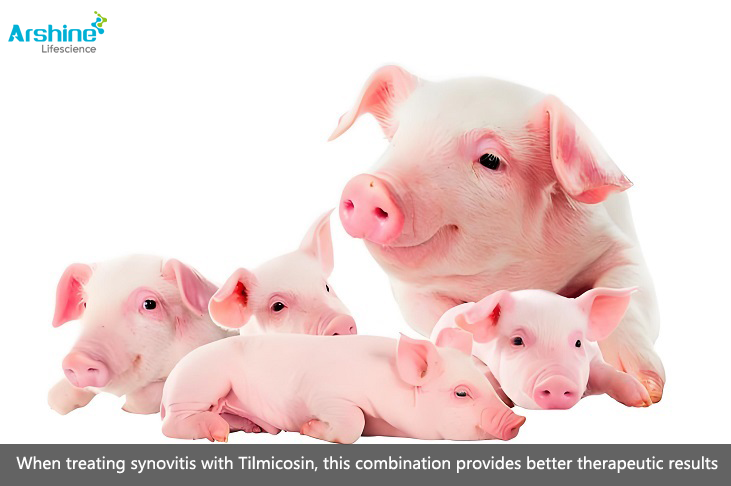

Tiamulin is widely used in poultry and livestock, particularly effective in treating chronic respiratory diseases in chickens, mycoplasma synoviae, mycoplasma in pigs, ileitis, infectious pleuropneumonia, swine dysentery caused by Brachyspira, and other conditions. However, misuse should be avoided, and it is crucial to learn how to use it scientifically and efficiently. The first step in scientific usage is to ensure proper and rational drug combinations while avoiding incompatibilities.
Tiamulin should not be combined with macrolide or lincosamide antibiotics due to their similar antibacterial mechanisms, which may lead to competitive antagonism. Hence, concurrent use is not recommended.
Tiamulin must not be used with polyether antibiotics (such as salinomycin, monensin, or narasin). Combining these drugs can result in animal movement disorders, muscle degeneration, and, in severe cases, death.
Beyond avoiding incompatibilities, ensuring the efficient use of tiamulin becomes essential. One of the most important strategies for maximizing its efficacy is through synergistic enhancement.
Tiamulin can be combined with various antibiotics for increased effectiveness, such as tetracyclines (doxycycline, oxytetracycline, chlortetracycline), polypeptides (colistin sulfate), β-lactams (amoxicillin), aminoglycosides (gentamicin, neomycin, kanamycin), sulfonamides, nitroimidazoles (dimetridazole, metronidazole, tinidazole), and antiviral traditional Chinese medicines.
Some classic combinations include Tiamulin + Lincomycin, Tiamulin + Chlortetracycline, Tiamulin + Doxycycline, Tiamulin + Dimetridazole, Tiamulin + Colistin, and Tiamulin + Antiviral Chinese Medicines.
Achieving synergistic enhancement is a critical step in creating an effective "Tiamulin prescription." This involves finding the best synergistic "efficiency ratio" (also known as the golden ratio) and adjusting the dosages and combinations of different drugs. These factors form the core of a high-tech prescription, and this "core" is the secret behind the so-called "family recipes."
Once these technical challenges are overcome, the resulting high-tech "effective prescription" must be administered according to the pharmacological and pharmacokinetic properties of the drugs. This must follow scientifically sound administration methods and strict adherence to prescribed guidelines, typically summarized in the product's label as "dosage and administration."
When ambient temperatures exceed 40°C, feed containing tiamulin should not be stored for more than one week.
Avoid contact between tiamulin and the eyes or skin during use.
Pay close attention to tiamulin's drug incompatibilities, particularly avoiding its use with polyether antibiotics such as salinomycin, monensin, and narasin.
The most common approach is to combine tiamulin with doxycycline as the main drugs. Depending on the specific inflammation, swelling, fever, and pain reactions, additional flavor-masking agents, palatability enhancers, anti-inflammatory drugs, and swelling reducers are used to achieve both cause-targeted and symptom-targeted treatments. This combination exhibits time-dependent characteristics, so in addition to ensuring sufficient dosage, it is crucial to maintain a full course of treatment for the best effect and to prevent relapses.
Add: Block 14, No.100, Luyun Road, Changsha 410205, Hunan, China.
Email: info@arshinevet.com
WeChat: +8618874001228
WhatsApp: +8615697311407
Tel:86-731-82294958